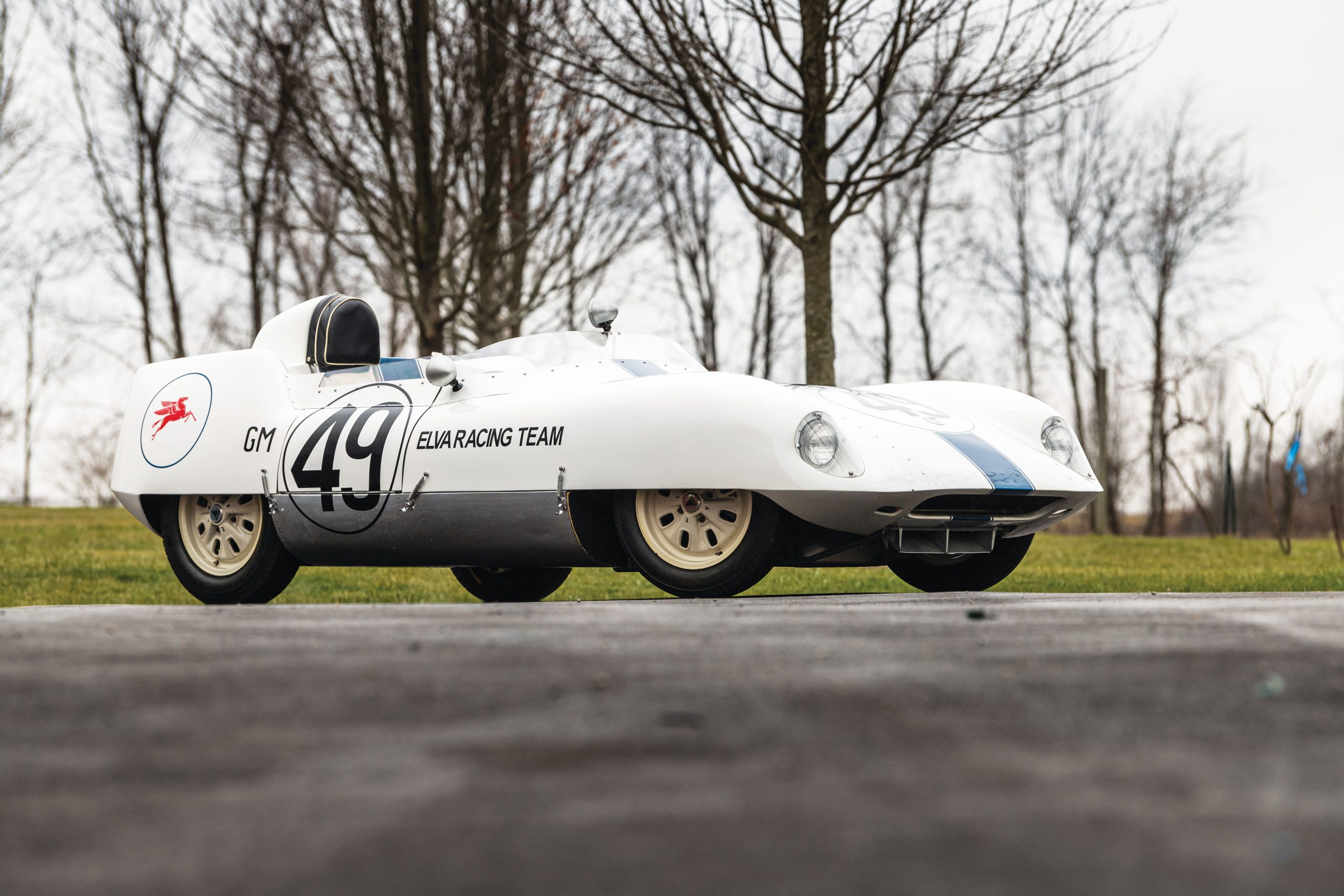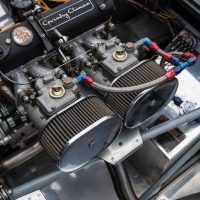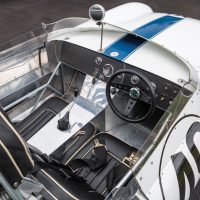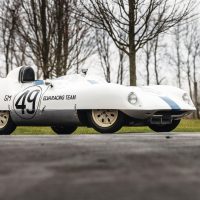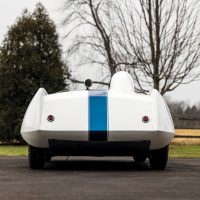SCM Analysis
Detailing
| Vehicle: | 1959 Elva Mk IV |
| Years Produced: | 1958–59 |
| Number Produced: | About 30 |
| Chassis Number Location: | Plaque on dash |
| Engine Number Location: | Left front of block |
| Club Info: | Elva Owners Club |
| Website: | http://www.elva.com |
| Alternatives: | 1959–60 Lola Mk 1, 1959–60 Elva Mk V, 1959–60 Lotus 17 |
This car, Lot 128, sold for $63,000, including buyer’s premium, at Bonhams’ Scottsdale auction on January 21, 2021.
The world of vintage racing has many aspects, and at various times I have written about them all. There are collectible treasures that will anchor collections, insanely fast cars that will test the abilities of anyone brave enough to approach their limits, and occasionally just plain weird examples of what somebody thought might be a good idea. Today I get to write about what I consider to be the most basic value in playing with old racing cars: just plain fun.
In all of vintage racing, I don’t think there is a category of cars that are more enjoyable to race than the under-1,500-cc sports racers circa 1956 through 1961. This is not a place for towering egos or flashy displays. These cars are neither wickedly fast nor particularly dangerous. But if you think you know how to race, this is a great way to show it.
Slow your roll
The cars are very light with not much horsepower; 1,100 pounds and 110 hp are typical. With four-inch-wide tires on 15-inch wheels, they don’t have much grip. They really don’t use brakes much. If you want to run at the front, the point is to never slow down, sort of like giant slalom ski racing on short skis. You have to carry every ounce of momentum into, through and out of every corner. If you are not completely committed to a corner, turned in with all four tires drifting and your foot hard on the throttle by the number-one brake marker, you are not in the hunt.
That said, you are still not going terribly fast, mistakes are generally more embarrassing than costly, and your fellow racers tend to laugh a lot. In the days before Formula Junior, this was the development class for serious drivers, and virtually all the famous racers of the 1960s learned their craft on these cars; they can be as serious as you want them to be. On top of that, there are well-established grids on both coasts of the U.S. and in Europe, so there are plenty of others to play with.
My personal racer is a 1961 Elva Mk 6 that runs in this group, so I am speaking from experience.
A Lotus competitor
The class got started in the early post-war years in the U.K., mostly specials and homebuilt racers using 1,100-cc flathead Ford engines (which were plentiful and cheap, if also anemic and heavy). The situation changed when Coventry Climax brought out the FW engine in about 1954. Originally designed as a portable marine fire-pump engine, it was compact and light, and powerful when adapted for automotive use.
The next big step came in 1956, when Colin Chapman introduced the Lotus Eleven. Using a tubular space-frame chassis with wickedly beautiful and aerodynamic alloy bodywork clothing (in the racing Le Mans version), a Climax engine, independent rear suspension and disc brakes, it immediately became the car to beat. Every serious racer had to have one.
Frank Nichols was a direct contemporary to Chapman, but with a different approach to life and business. Chapman was a racer and engineer, obsessed with creating and selling winning racers. Nichols was a businessman who had sort of stumbled into the racing business as a way of marketing a hot-rod conversion for the 1,100-cc Ford engine. The company was named Elva (from the French elle va, “she goes.”) It started producing its Mark 1 in 1955. Elva was in the business of selling racing cars, not racing per se, and as such, tended to follow leaders like Lotus rather than innovate.
More models
Responding to the success of the Lotus Eleven, Elva produced a series of racers that were increasingly modeled on that rival. By the time they got to the Elva Mk IV, introduced in mid-1958, Elva had managed to develop a racer that was at least the equal to and in many ways quicker than the Lotus. With a full tubular space frame, sophisticated front and independent rear suspension, Climax engine and a handsome, extremely light fiberglass body, it was immediately successful both here and at home in the U.K.
At this point, Elva, being in the business of selling cars, concentrated on the American market, and in particular on amateur drivers. This meant taming the razor-edge ultimate handling that future champions might prefer in favor of more-forgiving characteristics that kept drivers on the track. Thus the cars are not necessarily slower than the competition but can be less treacherous at the limit.
The problem with racing cars is that there is always somebody ready to come up with a better solution, and in mid-1959, Eric Broadley introduced the Lola Mk 1. Though similar in concept to the Eleven and Mk IV, it was much better in detail, and immediately began winning. Lotus countered with the Lotus 17; Elva, the Mk V. The racing was fabulous, but in 1961 the mid-engine revolution arrived, and the world moved on.
A modern perspective
Fast-forward 60 years and a mess of us are still playing with these cars. With aluminum bodywork — and many examples carrying laurels of substantial international competition success — the Lotus Eleven is the only one carrying much collectible value. The Lolas, Lotus 17, Elvas and various lesser-known racers are just weapons for battle and are priced accordingly. This is not to say cheap, though value is always available.
The Lola Mk 1 is clearly the weapon of choice for running in front, but buying one will cost between $180,000 and $220,000. The Lotus 17 can easily run with the Lolas for about $150,000 if you can find one (they are hen’s-teeth rare). Below this is a big step: Elva Mk IV and V models are worth about $65,000, as are many others.
With a good-enough driver and careful preparation, any car can be competitive. All are great fun to drive, so it becomes a question of perceived value vs. cost. Interestingly, the values cited above have remained virtually unchanged for the past 15 years at least. I think this is a reflection of them being weapons and/or toys rather than investments.
I am told that this car was sold to Europe, where it will compete in the Continental racing series. It may run at the front, or it may not, but the new owner will have a welcome entry to participate in a wonderfully fun racing experience. As such, the car was bought for exactly fair money but represents an excellent value. ♦
(Introductory description courtesy of Bonhams.)
